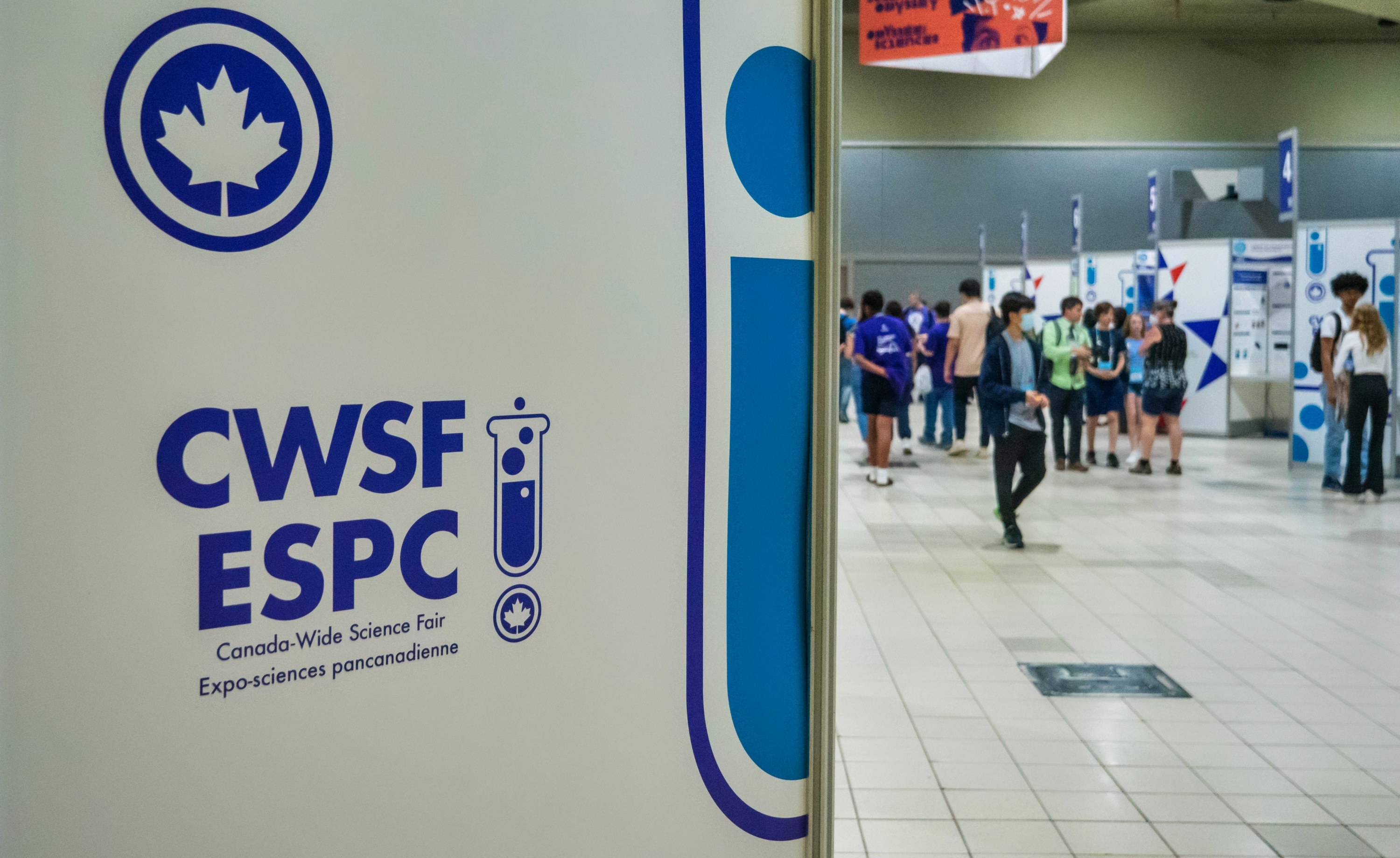Violet Goulden noticed a difference when she crossed the street at some Calgary intersections. Some felt safe to cross while others felt less safe. She wanted to find out why.
“I was really interested in what design factors make an intersection more safe for pedestrians,” says Goulden, a Grade 9 student at Elboya School.
Goulden’s search for answers turned into her Canada-Wide Science Fair project, “Pedestrian Down!” As part of her research, she analyzed intersections in neighbourhoods outside of downtown Calgary to identify which features affected pedestrian safety.
She found that medians, slip lanes and incomplete sidewalks or crosswalks were the most dangerous designs. Pedestrian scramble crossings, raised intersections, and “neck-downs” and mid-block crosswalks that narrow crossings tended to enhance safety. She aims for decision-makers to use her findings when creating or redesigning intersections.
Goulden is among nearly 400 students chosen from across Canada to present their research at the Canada-Wide Science Fair, an event that showcases top science fair projects. During the week-long fair, the finalists fill the Edmonton Convention Centre with the buzz of excited voices as they engage in lively conversation with their visitors.
By presenting their projects at the fair, the finalists get to meet like-minded peers early in their careers. They also meet mentors, judges and other researchers. Bridging into the community in this way is a key part of the week-long event, says chief judge Pierre-Phillipe Ouimet, a physicist who graduated from the University of Alberta. He knows the importance of this connection first-hand.
“As a youth who was interested in STEM myself, one of the things that I remember from my high school and from my junior high experience is that I felt very isolated,” Ouimet says. “It’s not until I came to university that I found a group of people who shared a lot of the same passions and interests that I did.”
Entering projects into science fairs also encourages students to engage with the research process from start to finish.
“When you are doing research in STEM, you’re very much venturing into the unknown. And sometimes the thing you wanted to do doesn’t work,” Ouimet says. “The project morphs as you go along. Science fair projects do that too.”
Post-secondary institutions across Canada, including the U of A, send representatives to the fair to help finalists explore their options for after graduation. This year, finalists also had the opportunity to explore the U of A for a full day, going on a campus tour, trying a meal in residence and participating in hands-on lab experiments.

Aaryan Harshith, a Grade 12 student from Ontario, was one of the finalists who participated in the U of A experience. He has been accepted to multiple post-secondary institutions, including Stanford University in California.
“I think it was really informative,” says Harshith. “Very rarely do you get the chance to go to a lab and work with professors in pharmacology.”
Harshith’s Canada-Wide Science Fair project, LightIR, blends the disciplines of health and engineering, his main interest. The handheld device could help improve the outcomes of surgical tumour removal someday.
The excision of a tumour can leave behind traces of cancer invisible to the human eye, says Harshith. These leftover cells could develop into new tumours later on, leading to worse patient outcomes.
“My device essentially allows surgeons to detect where these cancer cells are, even if they are invisible, so they can remove them on the spot.”

He was inspired to create the project after experimenting with spectroscopy to non-invasively assess different chemical traits of fruit. After he confirmed that cancerous tissue and healthy tissue absorb light differently, he went on to build the LightIR prototype. The device analyzes the tissue’s light absorbency and then reports whether the tissue is cancerous or normal.
The Canada-Wide Science Fair has celebrated excellence in STEM since 1962. Harshith encourages anyone who’s considering joining a science fair to take the leap.
“Just try it. Even if you don’t know what it’s going to be like, even if you don’t necessarily know if this is going to be a valuable experience for you,” Harshith says. “Just the act of having an idea, experimenting with it, thinking critically about it — I think that’s a skill that’s going to transfer no matter what you’re doing.”
To see the finalists’ work first-hand, visit the Canada-Wide Science Fair through May 19.
